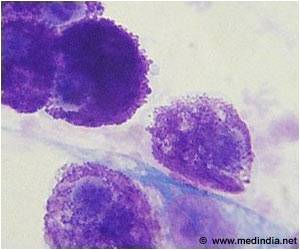Scientists claim that the quest for new cancer treatments could be revolutionised by advances in technology that can visualise living cells and tissues.

Applying such techniques early in the drug discovery process could improve the success rate of new medicines by helping to rule out drugs that are unlikely to work.
Researchers at the University of Edinburgh are leading the way in using biological imaging to make the development of new cancer treatments more efficient.
Recent advances mean that scientists can now check how experimental drugs are working inside living cells and in real time.
Using automated microscopes to track fluorescent dyes, researchers can rapidly test thousands of potential drugs in different cancer cell types to find the most promising new treatments.
This pioneering approach – known as phenotypic drug discovery – monitors the effect of a trial drug on the disease as a whole rather than its impact on an individual target protein, which has been the approach until now.
Advertisement
Currently, just five per cent of drugs tested in clinical trials are approved as therapies for patients. Often drugs do not work in a person as they do in an artificial environment. Sometimes treatments have unexpected side effects that are only picked up in the later stages of the development process.
Advertisement
Source-Eurekalert














